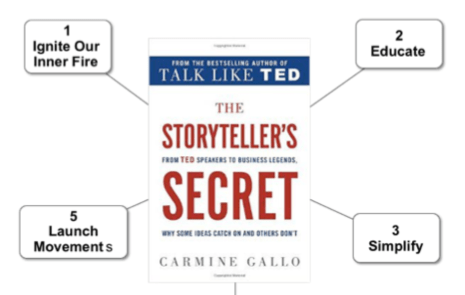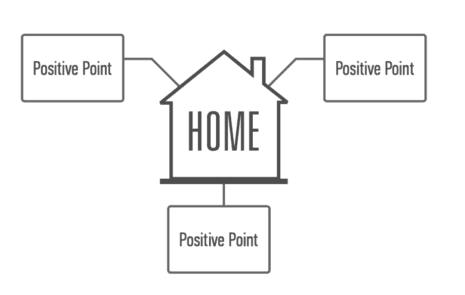
How to change boring content into brilliant content
When content seems boring, often it’s because the content is too abstract. To get readers to sit up straight in their chairs, spice up your content with concrete language.
Instead of describing the world from 40,000 feet, get to work at ground level. Bring the joy of life to readers by tickling all of their senses with your concrete words.
When you write about what’s concrete, you draw in readers like bees to honey.
Readers want to feel something. They seek to revel in their senses like a gardener who’s planting a new bed of flowers on a sunny spring day. They want to feel their hands in the squishy mud.
They want the back-breaking ache that comes from digging into the dirt for the first time since winter. They want to glimpse worms wriggling away, delighted that their work to improve the soil is paying off.
When it’s time to plant flowers, they pause to marvel at the plants’ rich green leaves, delicate petals, impossibly brilliant colors bathed in sunlight. They can’t resist sniffing the delicate flower nectar. They carefully untangle the bundle of roots to plant each flower.
If they accidentally knock a flower off a plant, they wonder if it’s one they could use to adorn a salad? Many flowers are edible. Nasturtium, marigold, chamomile and roses add delightful colors, smells and tastes to salads and canapés.

See how inviting content becomes when it turns concrete?
Concrete language is clearer
Author George Orwell loved sensory, concrete language. In this quote, Orwell pivots from abstract to concrete to make his point sensory, visible and memorable:
“The great enemy of clear language is insincerity. When there is a gap between one’s real and one’s declared aims, one turns as it were instinctively to long words and exhausted idioms, like a cuttlefish spurting out ink.”
How can you bake concrete words into your content marketing? The next time you write, ask yourself a few questions:
- What senses can you invoke to bring this content to life? Seeing, hearing, touching, smelling, tasting?
- If your topic is highly abstract, as often happens in finance, technology or healthcare, how can you bring it down to earth with examples?
- If your content includes percentages or fractions, can you paint a word picture instead of relaying a statistic? If 21% of writers use word pictures, make it easier for readers to understand by saying “one out of five” writers.
- Can you place your audience in a physical setting they recognize, like a garden?
- What metaphor or analogy can bring the five senses into your idea? Stumbling through the darkness, finding the light? Transforming like a caterpillar turning into a butterfly? Climbing the stairs as you solve a problem step by step?
Concrete words work hard enough to break a sweat
In his book Magic Words: What to Say to Get Your Way, Jonah Berger writes that, “Concrete language has a host of beneficial consequences. It holds people’s attention, encourages support, and drives desired action.”
What benefits can you gain when you use concrete language with your audience? Choosing concrete words makes your message much more powerful because people:
- Recognize concrete words faster
- Find concrete words easier to understand
- Remember concrete words better.

Your concrete message paints word pictures, so it activates two semantic networks – a response that neuroscientists “dual coding.” Dual coding boosts people’s ability to understand, comprehend, and recall your message.
Concrete words increase customer spending
Concrete language gives you more ways to connect with your audience’s senses and emotions, as you activate dual coding deep inside their brains.
Using concrete language in customer service interactions shows customers that you’ve really listened to them. That’s how concrete language measurably increases customer satisfaction.
Jonah Berger analyzed the use of concrete words in customer service emails. He found that “using concrete language significantly increased customer satisfaction. When customer service agents used more concrete language, customers were more satisfied with the interaction and thought the agent had been more helpful.”
Analyzing almost 1,000 email interactions with various retailers showed similar effects. “When employees used more concrete language, customers spent 30% more with the retailer in the following weeks. Talk may seem cheap, but this time it more than paid off.”
How can you bake more concrete words into your next piece of content?
Related Posts
Storytelling Is Who We Are: The Storyteller’s Secret
The Storyteller’s Secret “Storytelling is not something we do. Storytelling is who we are.” So begins The Storytellers Secret, a new book by Carmine...
To tell your story, where do you begin?
In my workshops, we do a lightning-fast exercise to create a 7-second story on a Message Map. A Message Map gives you an elevator...
Top 100 Content Marketing Question: How do you measure a successful content marketing campaign?
Content marketing campaigns make the most sense when buyers must purchase according to a set calendar cycle, for example, when people: Prepare to file...
In Content Marketing & Debates, Simple Messages Win
Marketers can learn a lot about winning messages from watching political debates. In U.S. presidential debates candidates get a chance, in a free marketplace of...





